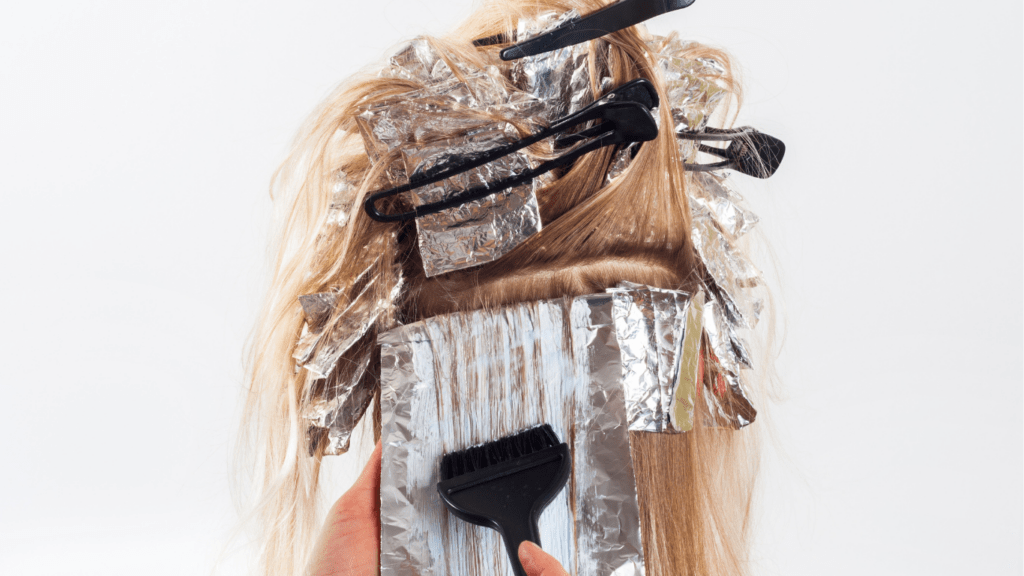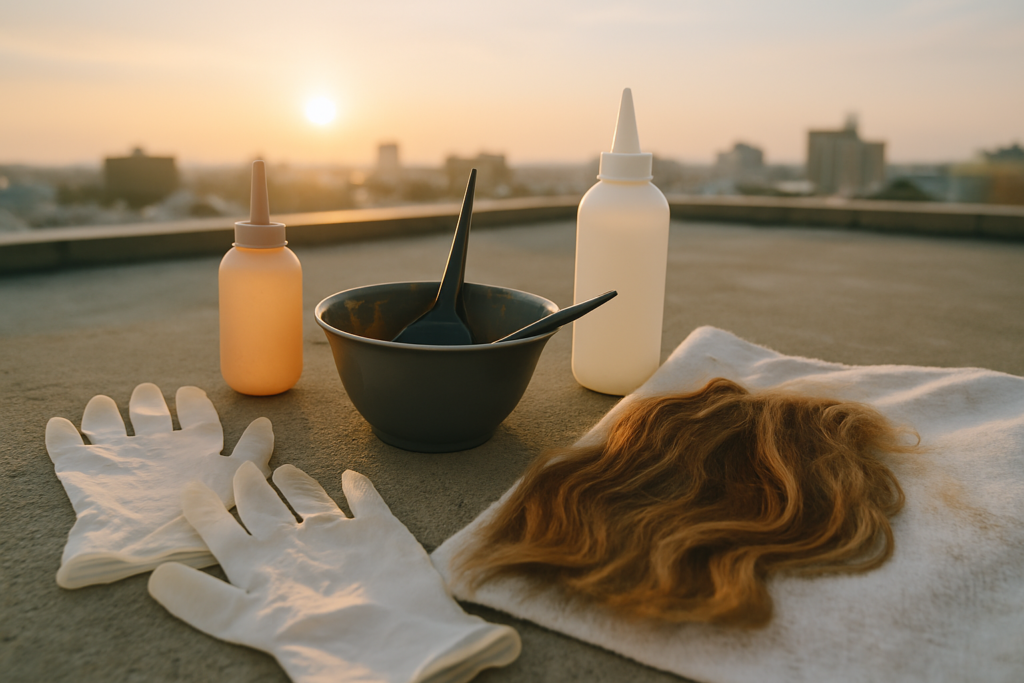Understanding Common Hair Coloring Mistakes
Hair coloring mistakes happen often but can be easily fixed. Below, I’ll explain some common errors and how to avoid them.
Choosing the Wrong Shade
Selecting an unsuitable hair color often results in unexpected results, like a hue too dark or light for your skin tone. Professionals suggest opting for shades within two levels of your natural color. For example, if your natural color is light brown, consider staying between dark blonde and medium brown.
Overprocessing Hair
Overprocessing leads to damaged, brittle hair. It occurs when hair is dyed too frequently or left under color for too long. Always follow the recommended processing time indicated on the product. For prevention, use deep conditioning treatments once a week.
Uneven Application
Uneven color application results in patchiness. This often happens when the dye isn’t distributed evenly from root to tip. To ensure consistency, section your hair into small parts before applying the color. Use a comb to evenly spread the dye throughout each section.
Fixing the Wrong Shade
Sometimes, hair color doesn’t turn out as expected. It might be too bright, too dark, or have harsh lines. Here’s how to fix these common mistakes and achieve a more natural look.
Toning Down Too-Bright Colors
When color turns out too bright, use a toner or color-depositing conditioner. Toners help neutralize overly vivid shades. Opt for a toner that targets the specific undertone you want to adjust. Ash or blue-based toners work for overly warm tones. If the bright color persists, add a semi-permanent dye a shade darker than your current color. This will deepen and mute the intensity.
Correcting Colors That Are Too Dark
If hair appears too dark, start by washing it multiple times with a clarifying shampoo. This helps in fading the color slightly. For more drastic results, try a color remover. These products strip the artificial color. Avoid using them too frequently to prevent hair damage. When correcting, continually condition to maintain moisture and strength. If both options fail, apply a lighter semi-permanent dye as a temporary fix until the color fades more naturally.
Blending Harsh Lines
- Harsh lines can arise from uneven application or drastic color changes.
- To soften these lines, try blending with a semi-permanent color.
- Pick a shade that sits between your natural color and the applied one.
- Apply this color at the boundary lines. Another method involves a hair gloss treatment to blend colors seamlessly.
- A gloss treatment evens out color and adds a polished finish. For severe lines, consider a professional blending service to achieve better results.
Repairing Overprocessed Hair
Overprocessed hair feels dry and brittle, requiring immediate care to restore its health and shine. The following treatments and precautions offer effective ways to repair and prevent further damage.
Deep Conditioning Treatments
Regular deep conditioning treatments revive overprocessed hair by restoring moisture. These treatments involve applying a rich, hydrating mask designed specifically for damaged hair. Leave the mask on for 10-30 minutes to allow penetration into the hair shaft. Examples include products with:
- argan oil
- shea butter
- keratin
For best results, use a deep conditioner once a week.
Protein Treatments
Protein treatments strengthen hair damaged by overprocessing. These treatments involve using a protein treatment product that contains hydrolyzed proteins like keratin, collagen, or silk. Apply the treatment as directed, usually once a month, to rebuild the hair’s structure. This helps restore elasticity and prevent breakage. Examples include reconstructors and protein-infused conditioners.
Avoiding Future Damage
To prevent further damage, avoid frequent use of heat styling tools and opt for air drying whenever possible. Use heat protection sprays and serums if heat styling is necessary. Limit chemical treatments like coloring, perming, and relaxing to reduce stress on the hair. Additionally, maintain a regular hair care routine that includes gentle shampoos and conditioners formulated for damaged hair.
Addressing Uneven Color Application

Dealing with uneven color can be frustrating. However, there are effective strategies to manage and fix this common issue.
Spot Treatments
Spot treatments target specific areas with uneven color. Use a color-matching dye, blending it carefully with a fine brush. For small patches, dabbing can achieve smoother results. Follow the package instructions, as timing is crucial for consistency.
Blending Techniques
Blending techniques help even out color disparities. Try balayage or foiling to create a more natural transition. Apply toner to balance unwanted tones, ensuring uniformity. Consistent sectioning and careful application enhance the effectiveness of these methods.
Professional Color Corrections
For severe cases, professional color corrections offer the best results. Experienced colorists assess and address the underlying issues. They may use multiple sessions, ensuring no further damage. Professional-grade products provide long-lasting solutions, securing the desired even color.
Preventing Future Mistakes
Preventing future hair coloring mistakes starts with proper preparation and care. By following instructions and maintaining hair health, you can achieve long-lasting, professional results.
Proper Preparation
Properly preparing hair before coloring ensures even application and vibrant results. Begin with a strand test to check how your hair reacts to the dye. It’s crucial to clarify your hair with a gentle shampoo to remove product buildup. Avoid using conditioners or styling products before coloring, as these can create barriers that prevent the color from penetrating evenly.
Following Instructions
Following the product instructions step-by-step provides the best chance for success. Read the instructions thoroughly before starting the process. Mix the dye according to the manufacturer’s directions, ensuring you use the correct ratio of color to developer. Set a timer once the dye is applied to avoid leaving it on too long, which can cause damage or an uneven color.
Regularly Maintaining Hair Health
Maintaining hair health keeps the color vibrant and minimizes damage. Use color-safe shampoos and conditioners to help maintain the dye’s vibrancy. Incorporate deep conditioning treatments weekly to restore moisture and strength. Protect your hair from heat styling by using protective sprays and limiting the use of hot tools. Regular trims help avoid split ends and keep your hair looking fresh and healthy.



 Founder & Hair Care Specialist
Edwardenn is the visionary force behind the website, with a deep passion for promoting healthy, beautiful hair. With years of experience in hair care and wellness, Edwardenn founded this platform to offer the latest hair care news, health tips, and expert advice. His mission is to empower individuals to understand and care for their hair, no matter their hair type or goals.
Founder & Hair Care Specialist
Edwardenn is the visionary force behind the website, with a deep passion for promoting healthy, beautiful hair. With years of experience in hair care and wellness, Edwardenn founded this platform to offer the latest hair care news, health tips, and expert advice. His mission is to empower individuals to understand and care for their hair, no matter their hair type or goals.

